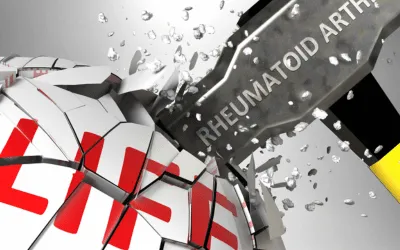About Arthritis
As the nation’s #1 cause of disability, arthritis affects nearly 60 million adults and 300,000 children. Over 100 types of arthritis and related conditions damage the joints and often other organs.
How can we assist you?
Helpful Tools for You

How Parents' Perspectives Influence Juvenile Arthritis Understanding
When your child receives a juvenile arthritis (JA) diagnosis, it's only natural to frequently check on their well-being. However, it's vital that your concerns don't inadvertently influence their outlook on the condition. Maintaining an optimistic and proactive stance can positively shape your child's view on living with arthritis.
Suzie Wright, an occupational therapist at Kansas University Medical Center, notes that children with even severe JA symptoms fare better when parents maintain a positive mindset. However, Mark Connelly, PhD, from the University of Missouri-Kansas City School of Medicine, reminds parents of the delicate balance needed: nurturing their child's independence in managing their condition while also offering emotional support.
After an arthritis diagnosis, it's common for family dynamics to shift. While it's okay for parents to process and grieve, regaining equilibrium swiftly benefits everyone. Parents should also be wary of overemphasizing their child's pain, as it can make the child hyper-aware and potentially hinder their coping abilities.
Overprotectiveness can lead to children doubting their ability to express or manage their symptoms. Connelly found that while overly protective approaches can limit a child's participation in usual activities, introducing distraction techniques, such as relaxation, can help them manage pain better.
Addressing pain medically is crucial, but parents can also guide their children to think positively and seek alternatives. For instance, if pain prevents an outing with friends, suggest a cozy movie night at home. Adopting a hopeful approach will inspire your child to develop robust coping mechanisms and self-belief as they navigate their condition. Remember, a JA diagnosis is just a part of who they are, and with a hopeful outlook, you can both see beyond it.
Effects of Arthritis

Cause of Disability
In the United States, 23% of all adults, or more than 54 million people, have arthritis. It is a leading cause of work disability, with annual costs for medical care and lost earnings of $303.5 billion.

Workforce Effects
Sixty percent of US adults with arthritis are of working age (18 to 64 years). Arthritis can limit the type of work they are able to do or keep them from working at all.

Global Impact
In fact, 8 million working-age adults report that their ability to work is limited because of their arthritis. For example, they may have a hard time climbing stairs or walking from a parking deck to their workplace.
Promoting Interventions That Reduce Arthritis Pain
American Arthritis Foundation recognizes several proven approaches to reduce arthritis symptoms:
Be active. Physical activity—such as walking, bicycling, and swimming—decreases arthritis pain and improves function, mood, and quality of life. Adults with arthritis should move more and sit less throughout the day. Getting at least 150 minutes of moderate-intensity physical activity each week is recommended.
Protect your joints. People can help prevent osteoarthritis by avoiding activities that are more likely to cause joint injuries.
Talk with a doctor. Recommendations from health care providers can motivate people to be physically active and join a self-management education program. Should your arthritis be interfering with your activities of daily living you may be a candidate to receive many new treatments, and learn how to reverse the arthritis condition.


